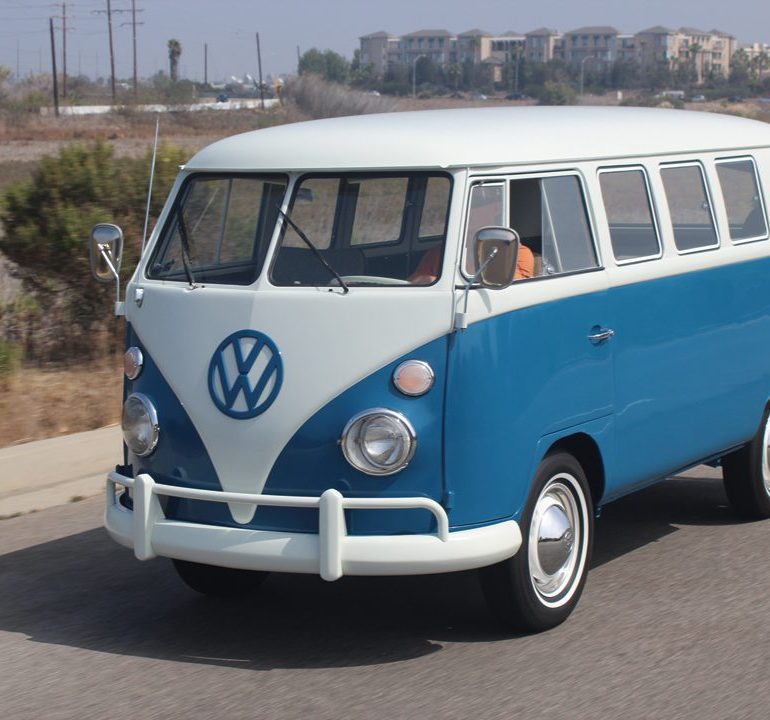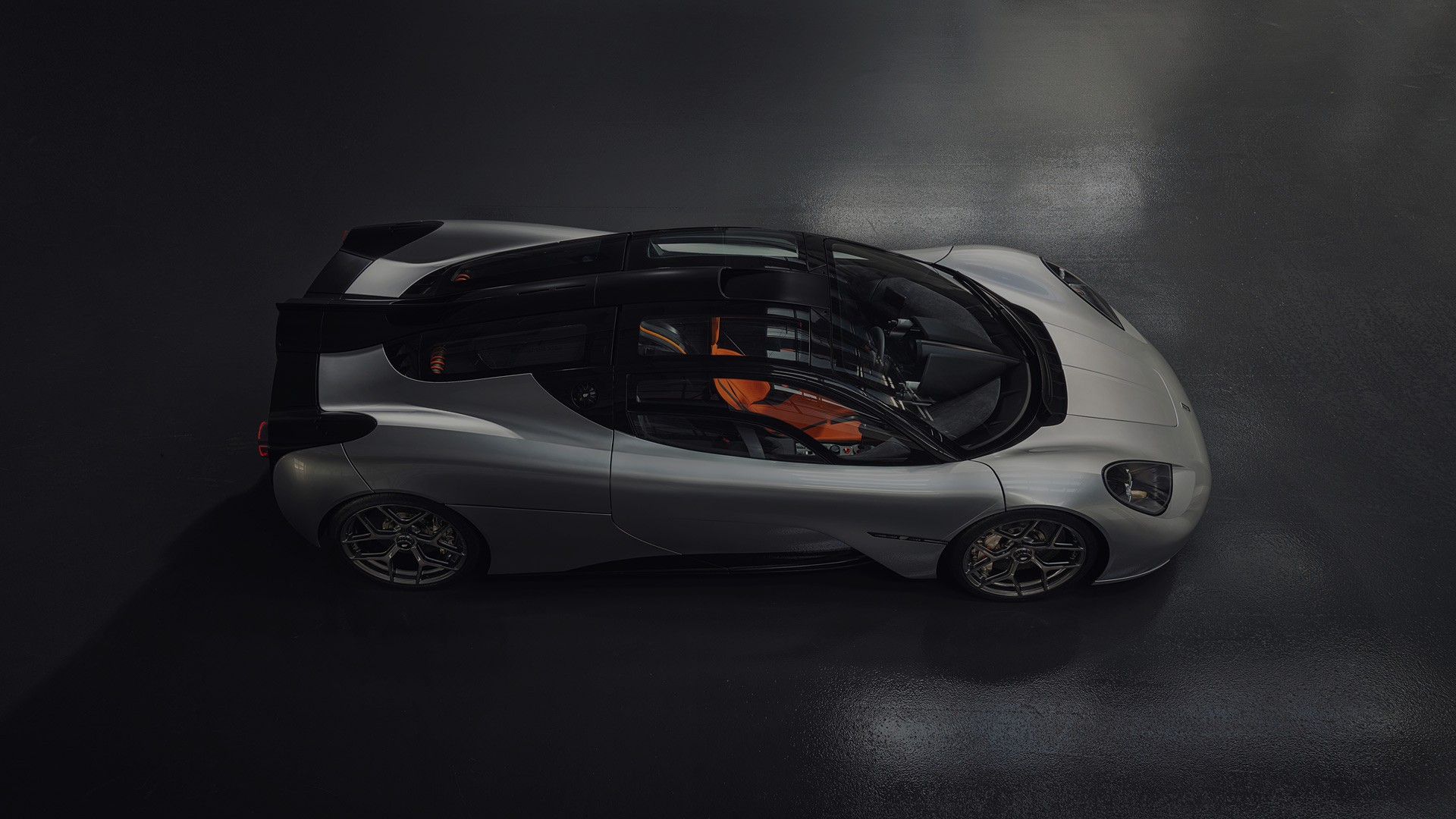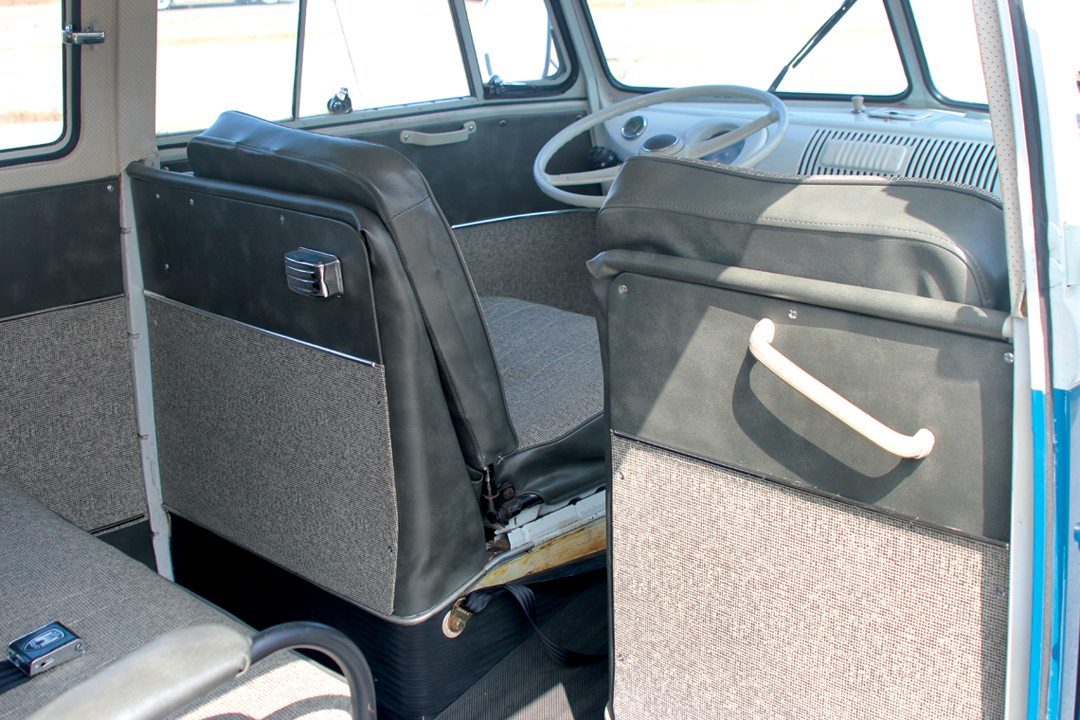
After World War II, VW’s Wolfsburg factory was in disarray and taken over by the Allied forces. While offered to a number of British and American car companies as war reparations, ironically none saw any merit in Volkswagen’s quirky looking Beetle, so they all passed on the opportunity. This left the British commanders who were overseeing the factory with a quandary of what to do with the facility. In the end, they decided to continue producing Volkswagen’s Kubelwagen personnel transporter (a forefather of Volkswagen’s versatile “Thing” from the 1970s) as a way of supporting the allied forces and keeping the locals gainfully employed.
In April of 1947, Dutch businessman Ben Pon Sr., journeyed to Wolfsburg, to try and convince the Allied commanders that they should continue to produce the Beetle and allow him to resume importation into Holland, as he had done before the war. While in Wolfsburg, Pon saw several examples of a crude flatbed truck, for use in the factory, that had been assembled from various bits and pieces from the Beetle parts bin, including its air-cooled, flat-4 engine. Pon reckoned that there would be a healthy demand in war-ravaged Europe for a low cost, utility van or transporter that could be outfitted in various configurations. While the Allied commanders (most notably Major Ivan Hirst, who ran the day-to-day affairs of the factory) were impressed and saw merit, they were unwilling and unprepared to take on a new design, outside what the factory was already tooled up to produce. However, on January 1, 1948, control of Volkswagen was turned back over to the German government and placed in the hands of new general manager Heinz Nordhoff. Nordhoff also saw the merit of an affordable commercial vehicle, and by the autumn of 1948 directed VW’s Chief Designer, Alfred Häsner, to develop Pon’s sketch.
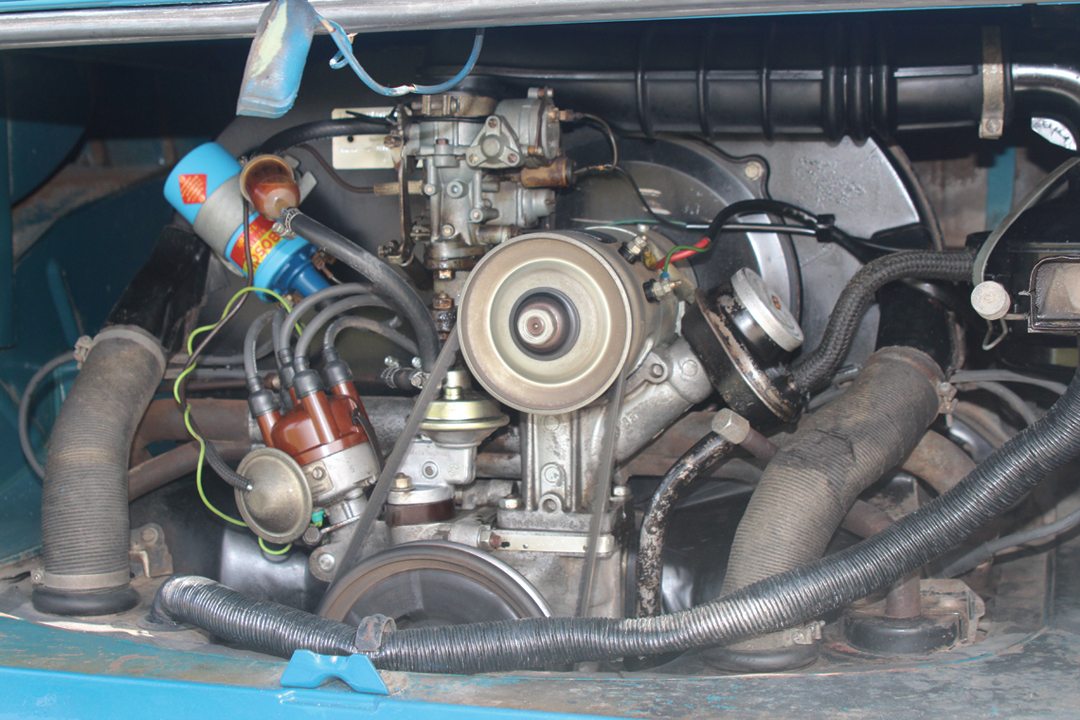
In the years that would follow, there would come many improvements, including larger engines and styling details, as well as many variations such as a pickup, a camper and the deluxe 21-window Microbus (an 11-window bus, with five additional window portals running along the roofline). By 1954, 100,000 Transporters of the first generation (T1) “Split Window” type were built. Production of these continued until 1967 when the (T2) “Bay Window” version was released. To date, total production of all Volkswagen Transporters now exceeds 10 million.
On the Road
Pulling open the door to this “Split Window” bus reveals a genuinely unique and minimalist interior. Unlike any other car, the front seats of the VW Transporter sit over the top of the front axle line, resulting in perhaps the most extreme “driver-forward” driving positioning of any vehicle. As a result of pushing the driver to the very front of the vehicle, there is nothing to get in between the driver and the front of the bus—as evidenced by the fact that the headlight buckets are prominent at the feet of both driver and passenger. This also translates into a very small and clean dashboard, an almost vertical steering wheel column coming up from the floorboard and an upright driving position with a commanding view of the road ahead.
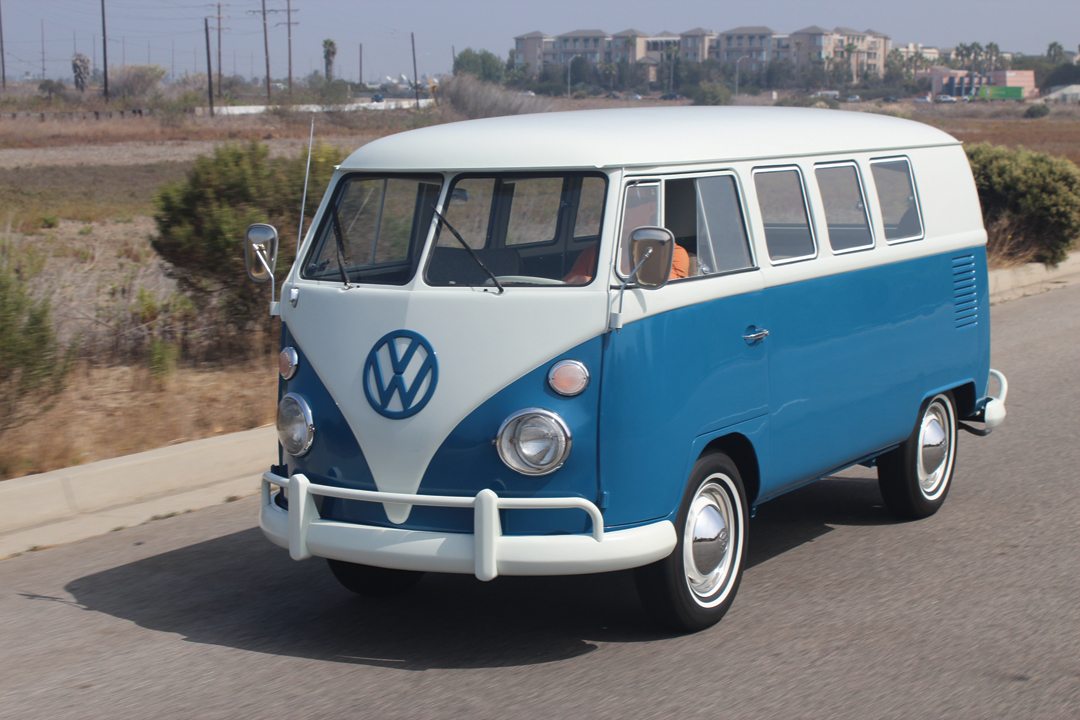
As might be expected—based on the Transporter’s humble origins and low-cost design brief—performance is nothing to write home to mother about. With a fairly anemic 50-hp engine pushing a vehicle that weighs about 2200 pounds, acceleration can be classified as “relaxed.” Likewise, with a shift linkage that is almost 8-feet long, there is a certain vague feeling to shifts that require an innate sense of where the next gear lives. Yet, despite these challenges—and Volkswagen’s notoriously vague steering feel—the bus is surprisingly fun to drive. Undoubtedly, it is that unusual “riding on top of the car” driving position that contributes to the fun of driving any of the T1 or T2 buses. With so much interior room and versatility, coupled with the busses’ quirky but fun handling, it’s no wonder that these little boxes on wheels took the Baby Boomers by storm and resulted in some 1.5 million “Split Window” and 3.2 million “Bay Window” examples being sold.
Driven Classics at a Glance:
SPECIFICATIONS
1966 Volkswagen Kombi Transporter
Chassis: Ladder frame, with steel unitary construction
Wheelbase: 94.5 inches
Length: 163 inches
Width: 65 inches
Front Track: 53.9 inches
Rear Track: 53.5 inches
Height: 75 inches
Suspension: (F) Transverse torsion bars, parallel trailing arms, telescopic shocks. (R) Transverse torsion bars, parallel trailing arms, telescopic shocks.
Weight: 2150 pounds
Engine: 1493-cc, horizontally opposed, Flat-4
Bore x Stroke: 83-mm x 69-mm
Compression: 7.5:1
Induction: Single Solex downdraft carburetor
Power: 50-bhp @4200 rpm
Torque: 78-lb-ft @ 2600 rpm
Transmission: 4-speed, with reverse
Brakes: Hydraulically operated drums all around
PERFORMANCE
Top Speed: 81 mph
0-60 mph: 37-sec
Average fuel consumption: 27-mpg
VALUATION
Excellent: $43,000
Good: $23,000
Average: $14,000
Poor: $9,000


